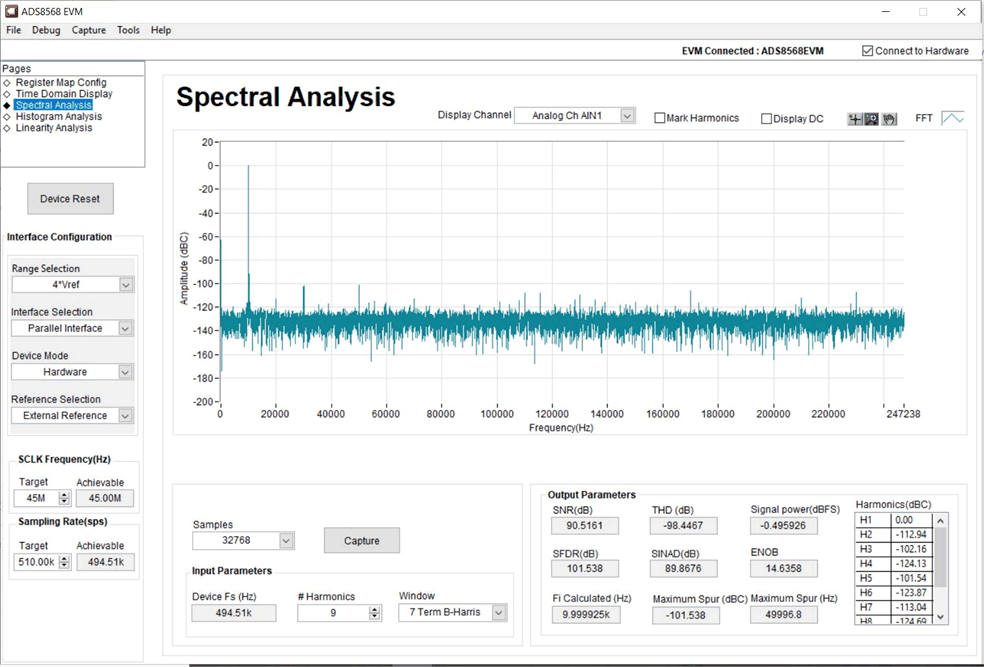SBAU193E June 2011 – May 2021 ADS8568
6.5 Frequency Domain Display
The spectral analysis tool, shown in Figure 6-5, is intended to evaluate the dynamic performance (SNR, THD, SFDR, SINAD, and ENOB) of the ADS8568 ADC through single-tone sinusoidal signal FFT analysis using the 7-term Blackman-Harris window setting. The FFT tool includes windowing options that are required to mitigate the effects of non-coherent sampling (this discussion is beyond the scope of this document). The 7-Term Blackman Harris window is the default option and has sufficient dynamic range to resolve the frequency components of up to a 24-bit ADC. The None option corresponds to not using a window (or using a rectangular window) and is not recommended.
 Figure 6-5 Frequency Domain Display
Figure 6-5 Frequency Domain Display